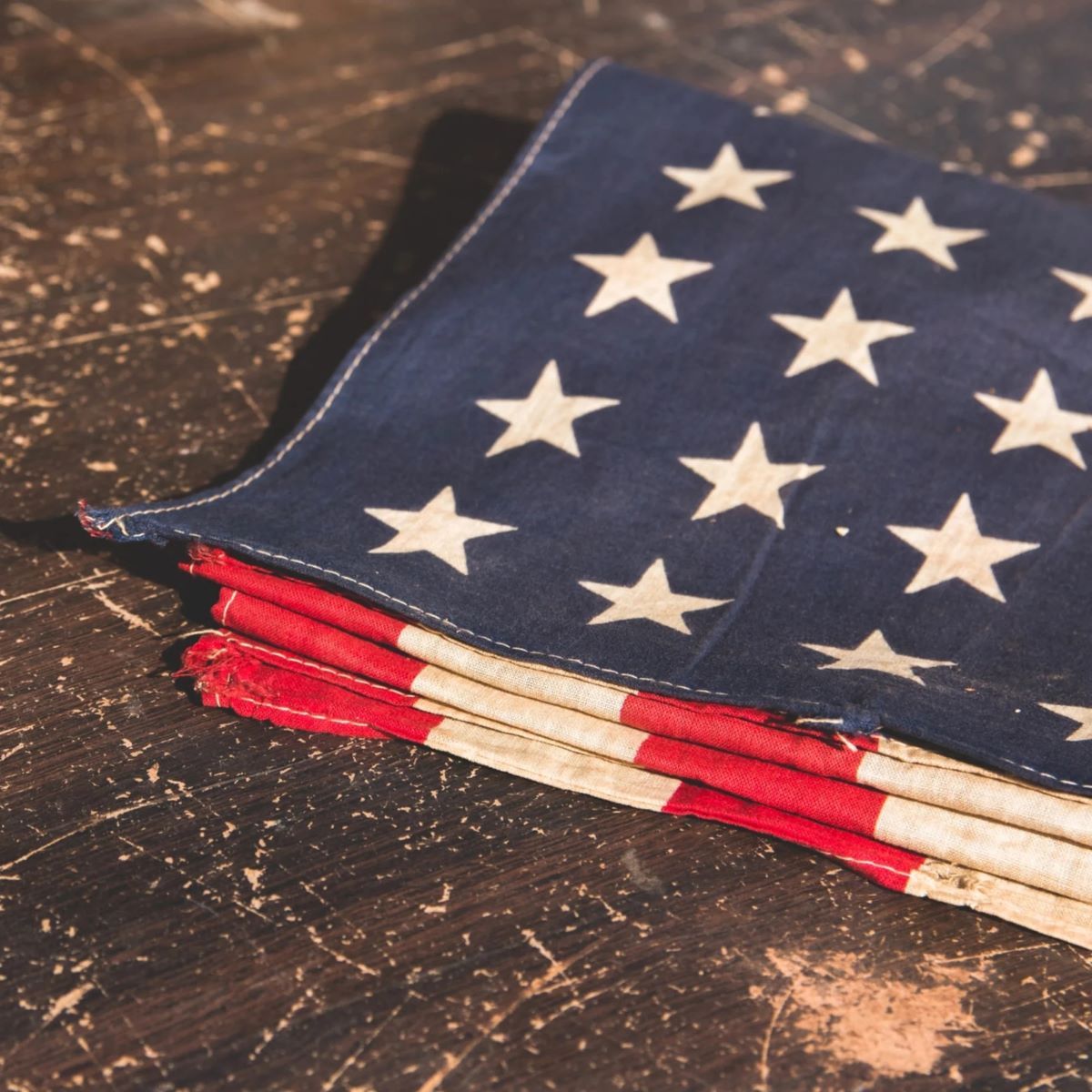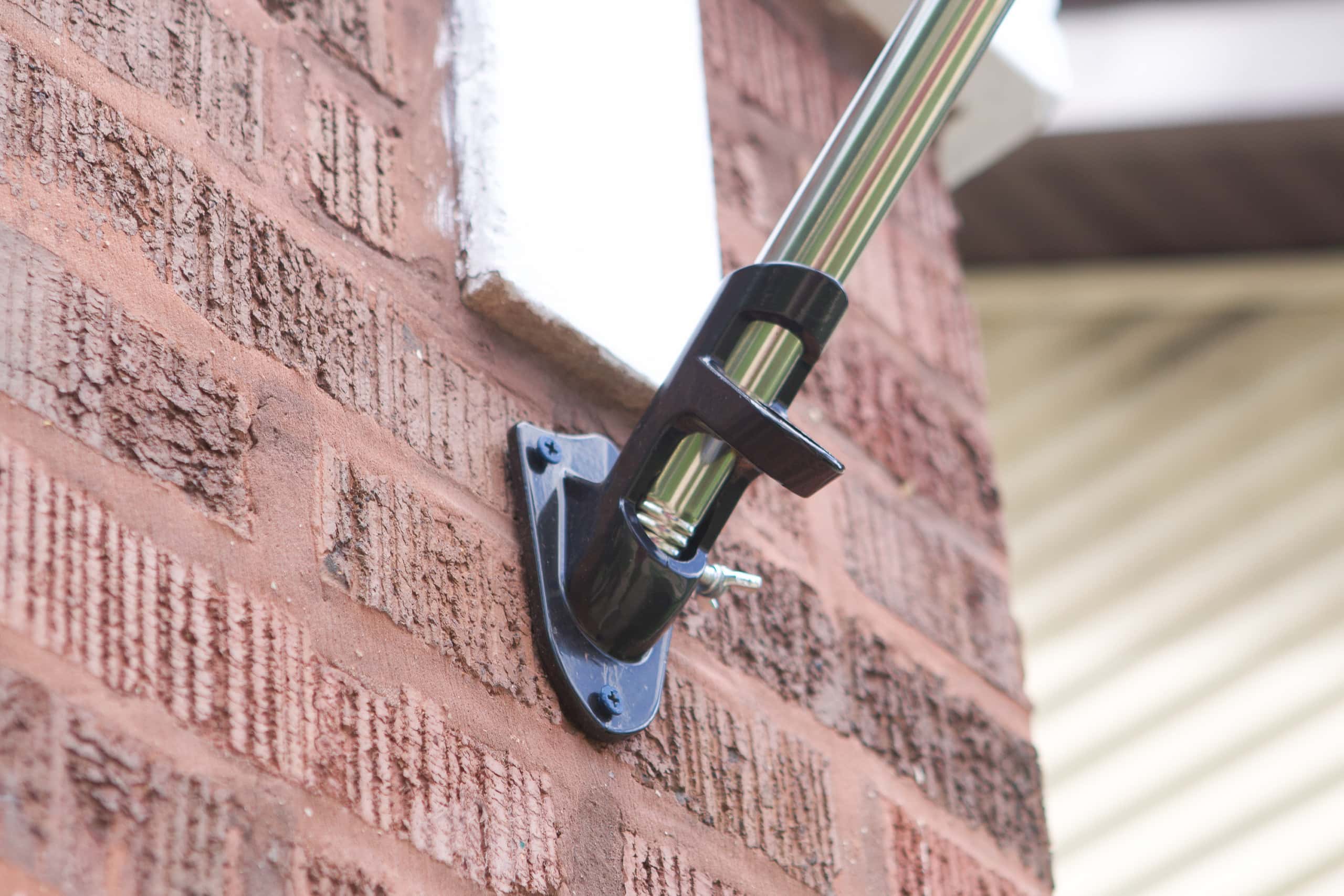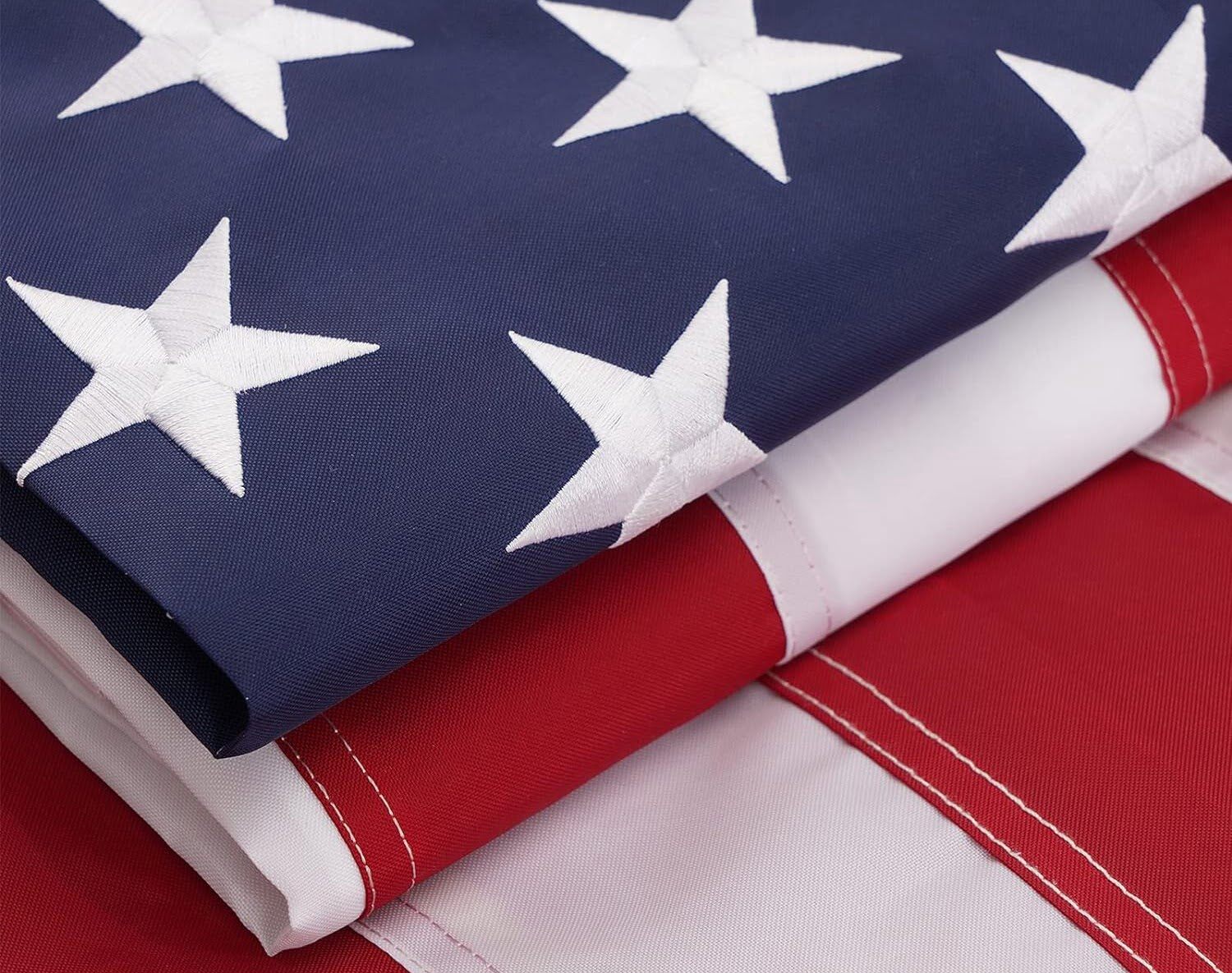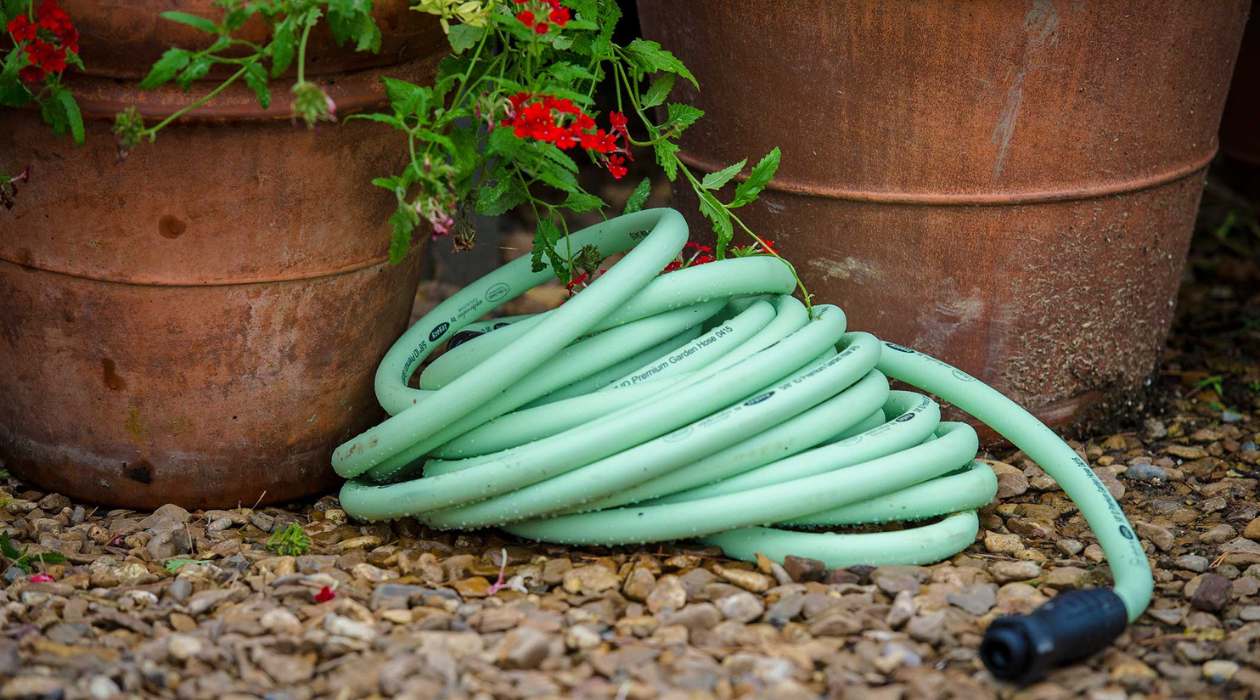

Articles
How To Store A Flag
Modified: December 7, 2023
Learn proper flag storage techniques and tips in this helpful articles. Keep your flags clean and protected for years to come!
(Many of the links in this article redirect to a specific reviewed product. Your purchase of these products through affiliate links helps to generate commission for Storables.com, at no extra cost. Learn more)
Introduction
Welcome to our comprehensive guide on how to store a flag. Flags are not just pieces of fabric; they hold significant symbolism and represent the values and ideals of a nation, organization, or cause. Whether you have a national flag, a historical flag, or a flag of personal significance, proper storage is essential to protect its integrity and prolong its lifespan.
In this article, we will explore the importance of proper flag storage and provide you with step-by-step instructions on how to store a flag both indoors and outdoors. We will also discuss the importance of regular cleaning and maintenance to ensure your flag remains in excellent condition.
By following the guidelines presented in this article, you can preserve the beauty and significance of your flag for years to come. Let’s dive in and learn everything you need to know about proper flag storage.
Key Takeaways:
- Proper flag storage is crucial to protect its integrity, symbolism, and longevity. Choosing the right storage method and regular maintenance ensure your flag remains vibrant and well-preserved for years to come.
- Whether indoors or outdoors, careful cleaning, folding, and storage are essential for flag preservation. By following these steps, you can protect the beauty and significance of your flag, ensuring it remains a proud symbol for generations.
Read more: How To Store Flags
Why is proper flag storage important?
Proper flag storage is important for several reasons. First and foremost, it helps to protect the flag from damage caused by environmental factors such as sunlight, humidity, and extreme weather conditions. A flag that is constantly exposed to harsh elements can fade, deteriorate, or even become torn.
Furthermore, storing a flag correctly helps to maintain its symbolic value and respect. Flags are symbolic representations of nations, organizations, and causes, and they deserve to be treated with reverence. Improper storage can result in a flag becoming dirty, wrinkled, or tangled, which can diminish its visual appeal and significance.
Another reason for proper flag storage is to prevent unnecessary wear and tear. When a flag is not stored properly, it can easily get snagged or caught on objects, leading to rips, tears, or fraying of the fabric. By storing the flag in a secure location, you can minimize the risk of accidental damage.
Additionally, proper flag storage helps to prolong the lifespan of the flag. Flags that are stored correctly will maintain their vibrant colors and sharp details for a longer period of time. This is especially important for historical or collectible flags, where preserving their authenticity is crucial.
Lastly, storing a flag in an organized manner makes it easier to retrieve and display it when needed. Whether you’re planning to fly the flag for a special occasion or showcase it in a display case, having a well-preserved and easily accessible flag ensures a hassle-free experience.
Overall, proper flag storage is essential to protect the flag’s condition, preserve its symbolism, and prolong its lifespan. By giving your flag the care and attention it deserves, you can ensure that it remains a proud and dignified symbol for years to come.
Choosing the right storage method
When it comes to choosing the right storage method for your flag, there are a few factors to consider. The ideal storage method will depend on the type of flag you have, the available storage space, and your personal preferences. Here are some options to consider:
- Flag display case or shadow box: If you have a small flag or a special flag that you want to display, a flag display case or shadow box is an excellent choice. These cases are designed to protect the flag while allowing it to be showcased. Look for a case made from materials that offer protection from dust, UV rays, and moisture. Ensure that the case is the appropriate size for your flag and has a secure closure to prevent damage.
- Flag storage bag: If you have limited space or need a portable storage solution, a flag storage bag is a convenient option. These bags are typically made from durable and breathable materials that protect the flag from dust and allow air circulation to prevent moisture buildup. Look for a bag with a zipper or drawstring closure for easy access and secure storage.
- Flag storage box: If you have multiple flags or larger flags, a flag storage box may be a suitable choice. These boxes are designed to accommodate various flag sizes and are often made from sturdy materials like plastic or metal. Look for a box with a hinged lid and a latch or lock to ensure secure storage. It’s also a good idea to choose a box with dividers or compartments to keep flags separate and prevent tangling.
- Flat storage: For larger flags that cannot be folded, flat storage is necessary. Lay the flag flat on a clean, acid-free surface such as archival tissue paper or unbleached cotton muslin. Avoid folding or creasing the flag as it may cause permanent damage. If the flag is too large to lay flat, consider rolling it around a tube or dowel to prevent creases.
- Wall-mount storage: If you have a space on your wall, you can consider mounting the flag for storage purposes. Using hooks or brackets specifically designed for flag storage, hang the flag in a clean and dry area. Ensure that the flag is not exposed to direct sunlight or extreme temperatures.
When choosing a storage method, consider factors such as protection from dust, UV rays, and moisture, as well as ease of access and portability. Whichever option you choose, make sure it is suitable for the specific type and size of your flag, and that it provides adequate protection and support to keep the flag in excellent condition.
Storing a flag indoors
Storing a flag indoors requires careful consideration of the storage location and proper handling techniques to ensure the flag remains in excellent condition. Here are some steps to follow when storing a flag indoors:
- Clean the flag: Before storing the flag, make sure it is clean and free from any dirt or debris. Follow the manufacturer’s instructions for cleaning or consider consulting a professional flag cleaning service if needed.
- Fold the flag properly: Begin folding the flag by bringing the lower half of the striped section up over the canton (the blue field with stars), creating a triangular fold. Then, fold it again in the same triangular pattern, continuing until the entire flag is neatly folded into a triangle. Take care to ensure that the stars on the canton are visible on the outside of the folded triangle.
- Choose a suitable storage method: Depending on the type of flag and your available space, choose the appropriate storage method mentioned earlier, such as a flag display case or shadow box, a storage bag, or a storage box.
- Store the flag in a clean and dry location: Find a clean and dry area to store the flag, away from direct sunlight, moisture, and extreme temperatures. Avoid storing the flag in a basement or attic, as these areas may have fluctuating humidity levels.
- Handle the flag with care: When placing the flag into storage, handle it gently and avoid dragging it on the floor or any rough surfaces. Take care not to twist or fold the flag in a way that could cause damage or creases.
- Regularly inspect and maintain the flag: Periodically inspect the stored flag for any signs of damage, mold, or pests. If needed, clean or repair the flag following appropriate procedures or consider seeking professional assistance.
By following these steps, you can ensure that your flag is stored correctly indoors, maintaining its beauty and preserving its symbolism for years to come.
Store a flag in a cool, dry place away from direct sunlight to prevent fading and damage. Avoid folding it too tightly to prevent creases.
Storing a flag outdoors
Storing a flag outdoors requires extra precaution to protect it from the elements. Whether you have a flagpole in your yard or need to store the flag temporarily outside, here are some steps to follow:
- Remove the flag from the flagpole: If your flag is currently flying on a flagpole, carefully lower and remove it from the pole. Take care not to let the flag touch the ground or any dirty surfaces.
- Clean the flag: Before storing the flag, ensure it is clean and free from any dirt or debris. Follow the manufacturer’s recommendations for cleaning or consult a professional flag cleaning service if necessary.
- Fold the flag properly: Follow the proper folding technique mentioned earlier, folding the flag into a neat and tight triangle. This not only helps with storage but also shows respect for the flag.
- Choose a suitable storage method: When storing a flag outdoors, consider using a durable and weather-resistant flag storage bag. Look for a bag made from materials that can withstand UV exposure and moisture. Ensure that the bag is securely closed to prevent any damage or intrusion from insects or pests.
- Select an elevated and protected storage location: Find a secure and elevated location to store the flag outdoors. Make sure it is protected from rain, direct sunlight, and excessive wind. Consider using a covered patio, shed, or storage container to provide additional protection.
- Anchor the flag storage bag: To prevent the bag from being moved or blown away by strong winds, anchor it securely. You can use ropes, bungee cords, or weights to keep it in place while still allowing for proper air circulation.
- Check the flag regularly: Regularly inspect the stored flag for any signs of damage or deterioration. Make sure the storage bag remains securely closed and free from debris or moisture. If any issues arise, take appropriate action to clean, repair, or replace the flag if necessary.
Remember that storing a flag outdoors is not a permanent solution. If possible, it is always best to bring the flag indoors during inclement weather or when it will not be actively displayed. This will prolong its lifespan and prevent unnecessary damage.
Following these guidelines will assist in protecting your flag while it is stored outdoors, ensuring it remains in excellent condition and ready for display when needed.
Read more: How To Store Garden Flags
Cleaning and maintaining a flag
Regular cleaning and maintenance are essential to keep your flag looking pristine and to preserve its longevity. Here are some important steps to follow when cleaning and maintaining a flag:
- Read the manufacturer’s instructions: Before cleaning your flag, carefully read and follow the manufacturer’s instructions if they are provided. Different materials and designs may require specific cleaning methods, so it’s important to follow the recommended guidelines.
- Dust and gently shake the flag: Start by shaking off any loose dust or dirt from the flag. You can gently shake it or use a soft brush or broom to remove surface debris. Avoid vigorous shaking or brushing, as this may cause damage to the flag.
- Wash by hand: If the flag is machine-washable, launder it by hand using a mild detergent and cold water. Fill a basin or sink with water and add the detergent, following the instructions on the detergent’s packaging. Gently swish the flag in the water for a few minutes, paying attention to any stained or soiled areas.
- Rinse thoroughly: After washing, thoroughly rinse the flag with clean water to remove any remaining detergent. Make sure all soap residue is removed to prevent discoloration or damage to the fabric.
- Air dry: Allow the flag to air dry by hanging it on a clothesline or laying it flat on a clean surface. Avoid direct sunlight, as it may cause fading. Ensure the flag is completely dry before storing to prevent mildew or musty odors.
- Inspect for damage: While the flag is drying, take the opportunity to inspect it for any signs of damage. Look for frayed edges, loose threads, or tears. If any damage is found, consider repairing it or seeking professional assistance if necessary.
- Store the flag properly: Once the flag is clean and dry, fold it following the correct folding technique mentioned earlier. Choose a suitable storage method based on the flag’s size and your available space. Store the flag in a clean, dry, and protected area to prevent dust, moisture, and damage.
- Regularly inspect and maintain: Periodically inspect the stored flag for any signs of fading, discoloration, or damage. Address any issues promptly by taking appropriate cleaning or repair measures.
Remember, prevention is key to maintaining the condition of your flag. Avoid flying it during inclement weather or harsh conditions that may cause unnecessary wear and tear. Additionally, consider rotating the flag with a new one periodically to distribute the wear evenly.
By following these cleaning and maintenance practices, you can ensure that your flag remains vibrant, clean, and well-preserved for years to come.
Conclusion
Proper flag storage is essential to maintain the integrity, symbolism, and longevity of your flag. Whether you have a national flag, historical flag, or a flag with personal significance, following the guidelines outlined in this article will help ensure that it remains in excellent condition for years to come.
By choosing the right storage method, whether it’s a flag display case, storage bag, box, or wall-mount, you can protect your flag from environmental factors and prevent unnecessary wear and tear. Storing a flag indoors requires careful folding, selection of a suitable storage method, and finding a clean and dry location.
For those storing a flag outdoors, extra precautions must be taken to protect it from the elements. This includes proper cleaning, folding, using a weather-resistant storage bag, choosing an elevated and protected storage location, and regularly inspecting the flag for any damage.
Cleaning and maintaining a flag is also crucial for its preservation. Regular dusting, handwashing with mild detergent, thorough rinsing, air drying, and careful inspection for any damage are all important steps to follow. By practicing regular cleaning and maintenance, you can ensure that your flag remains vibrant and in top condition.
In conclusion, proper flag storage, cleaning, and maintenance are essential to protect the beauty, symbolism, and longevity of your flag. By giving your flag the care and attention it deserves, you are preserving a symbol of pride and history. Follow the guidelines provided in this article, and your flag will continue to inspire and hold its significance for generations to come.
Frequently Asked Questions about How To Store A Flag
Was this page helpful?
At Storables.com, we guarantee accurate and reliable information. Our content, validated by Expert Board Contributors, is crafted following stringent Editorial Policies. We're committed to providing you with well-researched, expert-backed insights for all your informational needs.















0 thoughts on “How To Store A Flag”